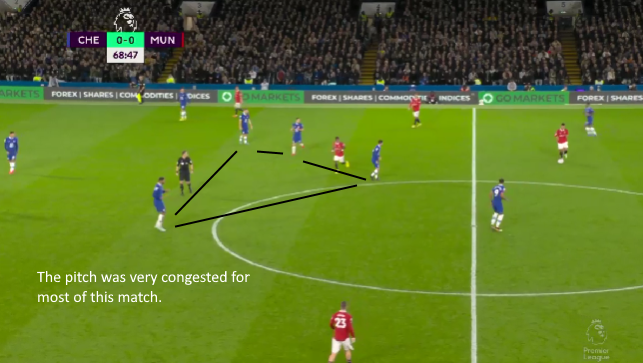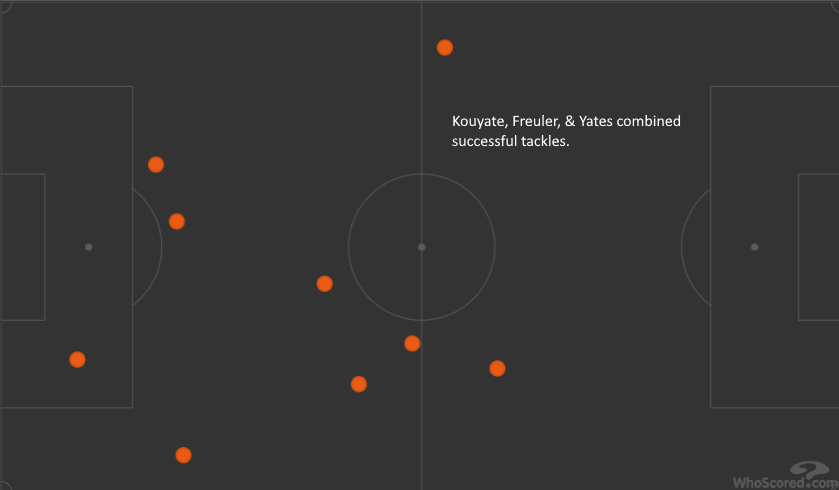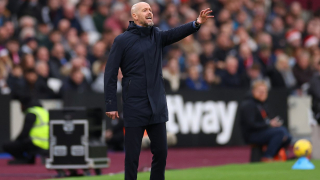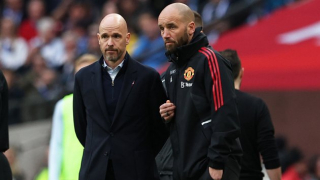Manchester United's midfield impressed until Graham Potter's intervention, Liverpool couldn't handle Nottingham Forest's low block and Ralph Hasenhuttl's switch surprised Arsenal.
Here's 5 lessons we learned from the Premier League weekend...
1) Casemiro & Eriksen are a change in direction for United
For the first 30 minutes at Stamford Bridge Manchester United dominated thanks to the brilliant work of Casemiro and Christian Eriksen. All of a sudden, and for the first time in a decade, United have a workable central midfield; a platform for long-term success.
Casemiro was the star, but both players excelled thanks to their composure in possession and under pressure, plus their excellent distribution to get the ball into dangerous areas. Scott McTominay and Fred always seemed to dislike the ball, shuttling it out wide as quickly as possible, whereas now the United midfielders receive possession ready to make things happen in an attacking sense. It is a huge shift.
They were assisted on Saturday by Graham Potter's use of a 5-2-3 formation, which left Ruben Loftus-Cheek and Jorginho with too much work to do and a numerical disadvantage as they tried to follow Bruno Fernandes. Compounded by an ill-conceived pressing structure among the front three, which allowed United to build easily out from the back, Chelsea were dominated for the first 30 minutes…
2) But Potter switch clogs up central midfield
United's supremacy didn't last long, though. Potter brought Matteo Kovacic on in the 33rd minute and moved to a narrow 4-3-1-2 system in which Mason Mount was a number ten with the priority of sitting on top of Casemiro. This helped to neutralise the United midfield and clog up the middle of the park.
The downside to having two astute tacticians in the dugout is that the match can become dull, as each works out how to nullify the other, and for the final hour it felt as though neither side wanted to take the risks necessary to win. Chelsea had patched up their huge gaps in central midfield by deploying a narrow diamond, and in the second half Erik ten Hag made a similar change.
He brought on Fred for Jadon Sancho and moved Fernandes into a narrow left wing position, sacrificing an attacker to give United more defensive clout in the middle of the park. By the end of the match, practically all of the attackers that started for either side were on the bench, reflecting the caution that ultimately defined the 1-1 draw.

3) Danks switch to 4-2-3-1 unleashes Villa
In many ways this was simply a classic psychological win for Aston Villa, who felt unshackled after the dreariness of the final few months of Steven Gerrard, and indeed interim manager Aaron Danks said after the game that his main instruction was for the players to express themselves and have fun. Going 3-0 up within 15 minutes suggests they did – for the first time this season.
But it was also a tactical victory. Danke, recognising that Villa had been constricted by Gerrard's stubborn use of a narrow 4-3-2-1 formation, switched to a 4-2-3-1 that gave Villa a more solid defensive foundation with a double pivot of Douglas Luiz and Leandro Dendoncker, the latter performing superbly on only his second start for the club.
The 4-2-3-1 also meant Villa finally had some width in the side, with Leon Bailey scoring and assisting by being able to dribble directly in the wide spaces as he would naturally prefer. It was simple stuff, but a reminder of just how bad things had got for the tactically clueless Gerrard.

4) Cooper deploys three defensive midfielders to beat Liverpool
Nottingham Forest have become very defensive since Steve Cooper signed a new contract, almost as if the deal made him realise that he is here for the long haul – with nothing to prove but a desperately difficult task of keeping Forest in the division. The expansive football has been replaced by a low block, minimal pressing, and a tightly compact 4-5-1.
He went even further with this new approach on Saturday, beating Liverpool 1-0 by using three defensive midfielders in the middle of the park. Cheickhou Kouyate, Remo Freuler, and Ryan Yates made nine tackles, eight fouls, and 11 clearances between them in a dogged and feisty display at the City Ground as Liverpool held 75% possession but could not create meaningful chances.
Jurgen Klopp's side repeatedly found themselves passing slowly, and harmlessly, into the wide areas before eventually swinging in a hopeless cross. It was testament to how well Forest had blocked the centre, neutralising Klopp's narrow front four.

5) Southampton formation change reveals Arsenal tiredness
The defining moment of this match was Ralph Hasenhuttl's decision during a period of first-half Arsenal dominance to change from a 4-4-2 to a 3-5-2, moving Mohamed Elyounoussi and Romain Perraud into wing-back positions and instructing Lyanco, Duje Caleta-Car and Mohammed Salisu to form a back three. This completely changed the dynamic of a game that had been a breeze for the Gunners.
The main feature, before then, had been clever overlaps from Ben White, which put left-back Perraud under too much pressure. After the system change, Arsenal could not get a proper foothold in attack, and after missing a couple of crucial chances in the first half were made to pay. As for Mikel Arteta, he will be ruing his decision to field such a strong team in the Europa League on Thursday, because throughout the second 45 at St. Mary's Arsenal looked exhausted, unable to press effectively.

























